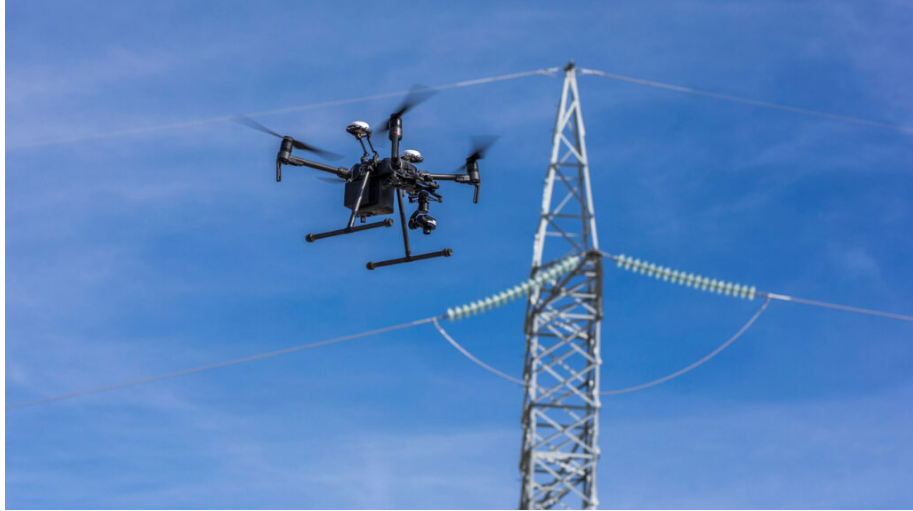
The UK Civil Aviation Authority (CAA) has unveiled new regulations that will revolutionize the use of drones for infrastructure inspections and site security. These updated rules now permit drones to fly beyond visual line of sight (BVLOS) in specific scenarios. The move marks a significant milestone in the evolution of unmanned aircraft systems (UAS).
Under the newly introduced policy for atypical air environments (AAE), drones can now operate BVLOS in areas where the risk of encountering other aircraft is minimal. This development represents a major leap forward for drone technology in the United Kingdom. It opens up a world of possibilities for various industries.
The implications of these new regulations are far-reaching, particularly for sectors that rely on regular inspections of large-scale infrastructure. Some key applications include: Power Line Inspections: Drones can now quickly and cost-effectively survey extensive power line networks. This assists in identifying potential issues before they escalate into major problems.
Wind Turbine Maintenance The new rules allow for more efficient checks of wind turbines. It significantly reduces the resources required to manage and repair green energy infrastructure. Enhanced Site Security The concept of flying guard dogs becomes a reality. Drones are now able to patrol larger areas for security purposes.
Sophie O’Sullivan, Director of Future of Flight at the UK Civil Aviation Authority, offered comment on the new rules. She highlighted the potential of this policy to enhance everyday life. As the potential for drone applications continues to expand, our new policy paves the way for innovative uses that will improve daily life while maintaining our commitment to high safety standards.

The regulator has outlined a cautious approach to implementing these new rules. It plans to collaborate with a select group of operators to thoroughly test and evaluate the policy in real-world conditions.
This strategy aligns with the authority’s recently published roadmap. This sets out a framework for enabling safe BVLOS operations that protect all aviation users, as well as people and property on the ground.
Central to this new policy is the concept of an “atypical air environment.” This is defined as a volume of airspace where operators can reasonably expect a reduced number of conventionally piloted aircraft. This is due to the proximity of ground infrastructure.

One company already poised to leverage these new regulations is sees.ai. In partnership with National Grid Electricity Transmission (NGET), they are set to revolutionize the maintenance and expansion of NGETS vast network in England and wales. This includes approximately 21,000 pylons and 7,000 kilometers of overhead cables.
John McKenna, CEO of sees.ai, expressed enthusiasm for the new policy. This groundbreaking innovation will help National Grid fulfil its commitment to providing clean, fair, and affordable energy to its customers, while undertaking the immense task of enabling the energy transition.
Kathryn Fairhurst, Overhead Line Operations Director at National Grid, further echoed this sentiment. AAE is significant progress on the way to deploying these technologies at scale. BVLOS inspection and surveying will help us continue to manage our assets safely and securely, while enabling the transition to a clean, fair, and affordable network of the future.

The UK’s progressive stance on drone regulations is likely to draw attention from regulators, operators, and customers worldwide. As John McKenna noted, This pioneering initiative will undoubtedly set a precedent for future developments in this exciting field.
Looking ahead, the UK Civil Aviation Authority continues to develop policies and regulations aimed at fully integrating drone flights with other airspace users.
This latest change represents a crucial stepping stone in the ongoing evolution of commercial UAS operations in the UK.
As the UAS industry continues to mature, we can expect to see even more innovative applications emerge. From infrastructure inspections to emergency response and environmental monitoring, the potential uses for BVLOS drone operations are vast and varied.


